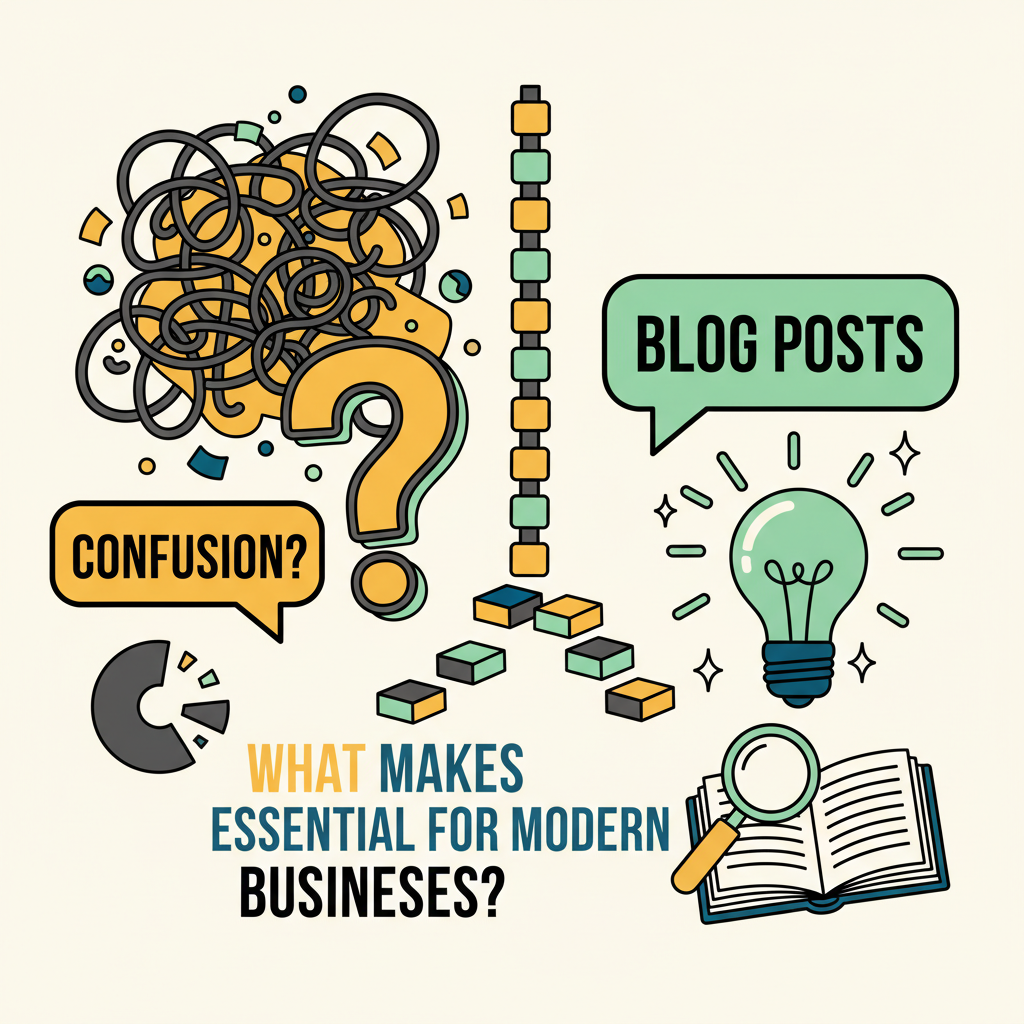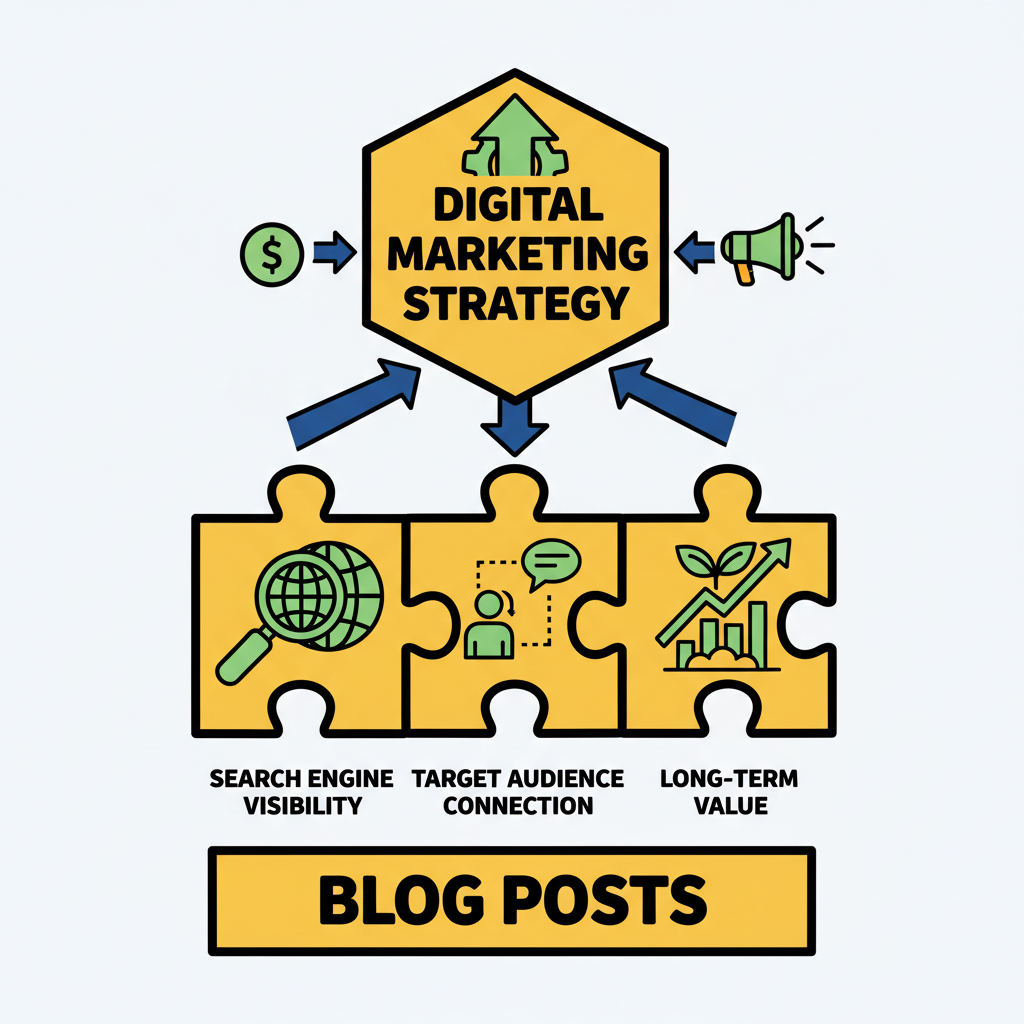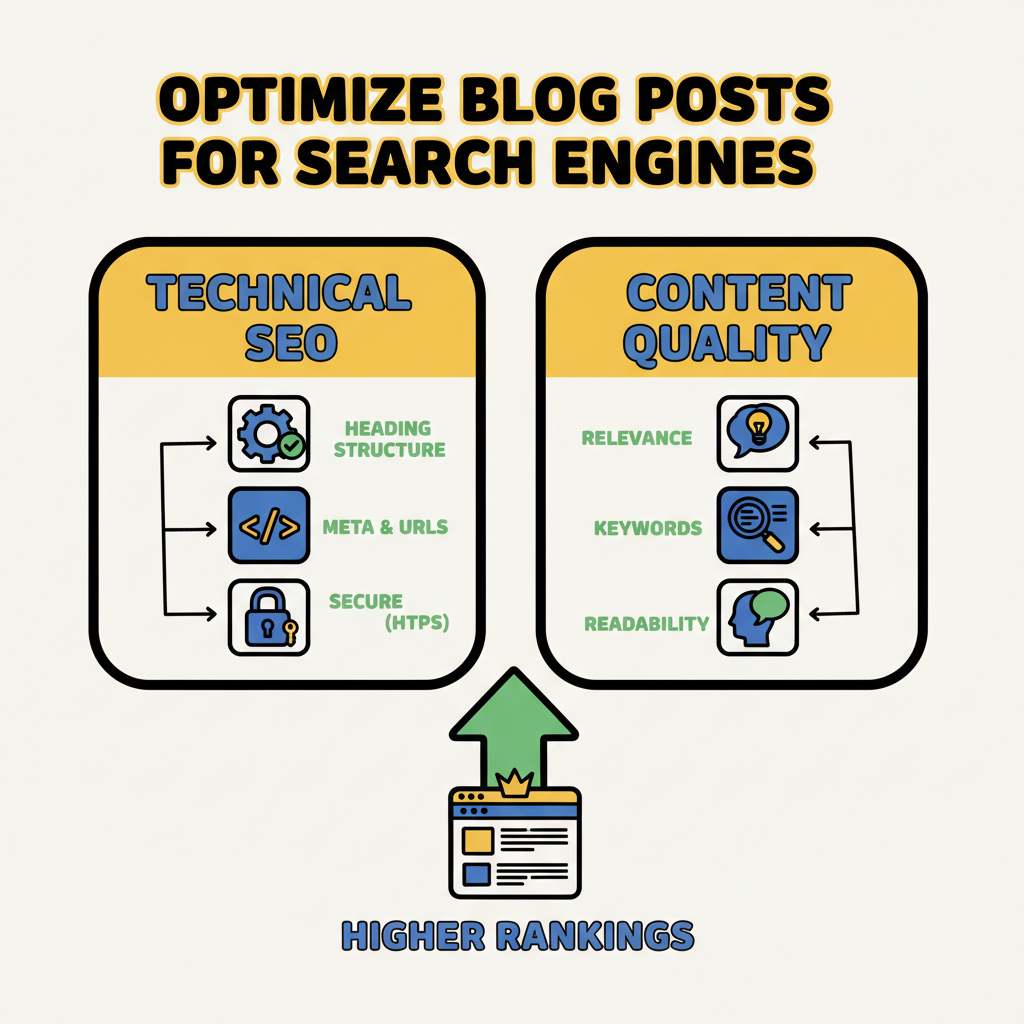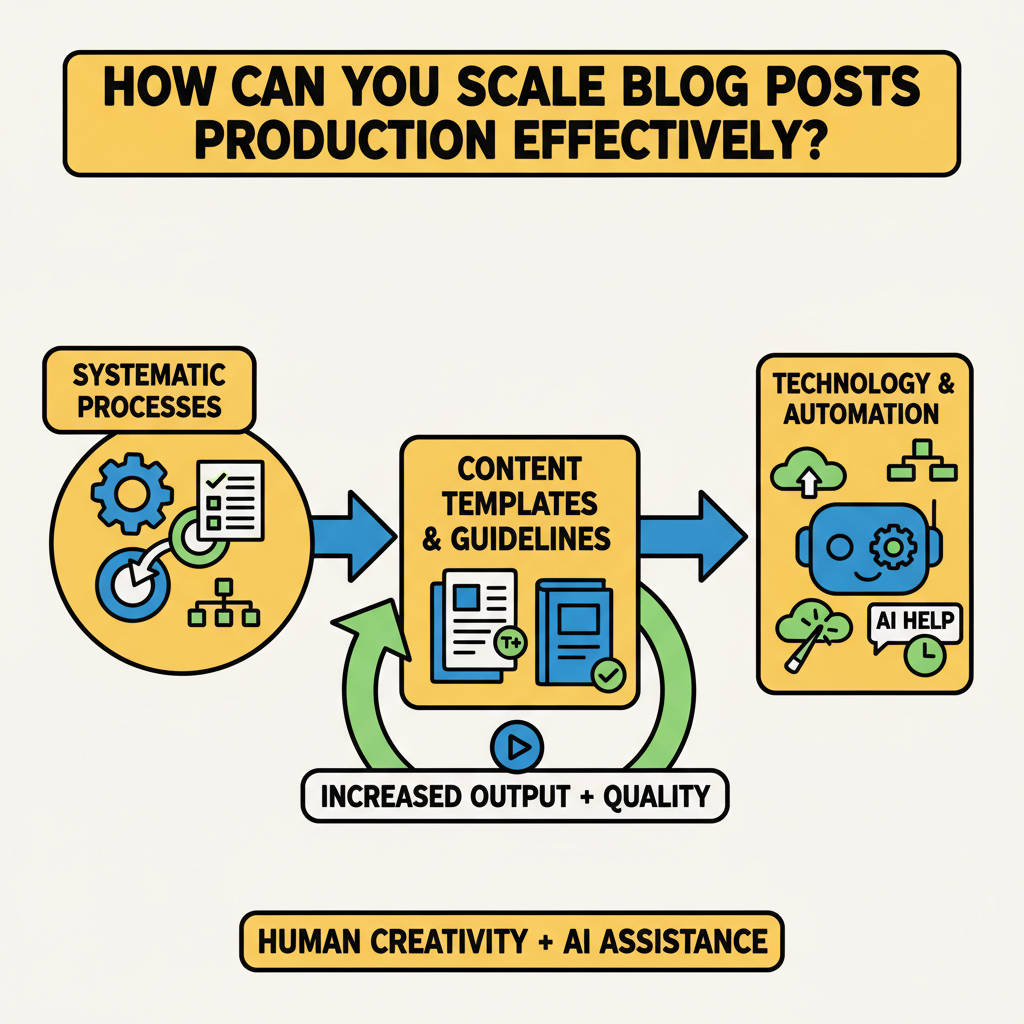What Makes Blog Posts Essential for Modern Businesses?
Posted by
Blog Posts: Complete Guide for 2025

Creating effective blog posts has evolved dramatically over the past few years, and 2025 brings new opportunities for businesses to leverage content marketing for sustainable growth. Whether you're a seasoned content creator or just starting your blogging journey, understanding the modern landscape of blog writing is crucial for driving organic traffic and achieving your business goals. This comprehensive guide will walk you through everything you need to know about creating, optimizing, and scaling blog posts that actually deliver results in today's competitive digital environment.
What Makes Blog Posts Essential for Modern Businesses?

Blog posts serve as the foundation of digital marketing strategies, acting as powerful tools that connect businesses with their target audiences while improving search engine visibility. Unlike traditional advertising methods, well-crafted blog posts provide long-term value by continuing to attract readers and generate leads months or even years after publication.
The modern approach to blog posts goes beyond simple content creation. Today's successful blogs integrate strategic keyword targeting, user intent analysis, and automated SEO techniques to maximize their impact. When you understand what keyword research means for your content strategy, you can create blog posts that not only engage readers but also rank higher in search results.
Businesses that consistently publish quality blog posts typically see a 13x increase in positive return on investment compared to those that don't blog at all, according to HubSpot's State of Marketing Report. This statistic highlights why blog posts remain a cornerstone of effective digital marketing strategies.
How Do You Plan Blog Posts That Drive Results?
Planning effective blog posts requires a systematic approach that combines audience research, competitive analysis, and content strategy development. The planning phase determines whether your blog posts will succeed or get lost in the vast sea of online content.
Start by identifying your target audience's pain points and questions. Use tools like Google Search Console, Answer the Public, or SEMrush to discover what your potential readers are actively searching for. This research phase helps you create blog posts that address real needs rather than topics you assume are important.
Content planning also involves establishing a consistent publishing schedule and creating content clusters around main topics. This approach helps search engines understand your expertise while providing readers with comprehensive information about subjects they care about.
What Content Types Work Best for Blog Posts?
Different content formats serve various purposes and appeal to different audience segments. Understanding which types of blog posts perform best for your specific goals helps you allocate resources effectively.
| Content Type | Best For | Average Engagement | SEO Value |
|---|---|---|---|
| How-to Guides | Educational content | High | Excellent |
| List Posts | Quick consumption | Very High | Good |
| Case Studies | Building trust | Medium | Excellent |
| Opinion Pieces | Thought leadership | Medium | Good |
| News/Updates | Timely relevance | High | Variable |
How Can You Optimize Blog Posts for Search Engines?

Search engine optimization for blog posts involves both technical elements and content quality factors. Modern SEO requires a balanced approach that satisfies both search engine algorithms and human readers.
Technical optimization starts with proper heading structure, meta descriptions, and URL formatting. Your blog posts should use H1 tags for main titles, H2 tags for major sections, and H3 tags for subsections. This hierarchy helps search engines understand your content structure while making it easier for readers to scan and navigate your posts.
Content optimization focuses on natural keyword integration, comprehensive topic coverage, and user engagement signals. Rather than stuffing keywords into your blog posts, focus on creating comprehensive content that thoroughly addresses your chosen topic. Search engines now prioritize content depth and user satisfaction over keyword density.
The rise of automated SEO tools has made optimization more accessible for content creators. These tools can analyze your blog posts for technical issues, suggest improvements, and even help identify content gaps that you should address to improve your search rankings.
Why Does Content Length Matter for Blog Posts?
Content length significantly impacts how blog posts perform in search results and user engagement metrics. While there's no magic number that guarantees success, understanding the relationship between length and performance helps you make informed decisions about your content strategy.
Research from Backlinko's analysis of ranking factors shows that longer blog posts tend to rank higher in search results. The average first-page result contains approximately 1,890 words. However, length alone doesn't determine success. Quality, relevance, and user engagement remain the most important factors.
Long-form blog posts provide more opportunities to cover topics comprehensively, include relevant keywords naturally, and demonstrate expertise. They also tend to attract more backlinks and social shares, which contribute to improved search engine rankings over time.
How Do You Create Blog Posts That Generate Organic Traffic?
Generating organic traffic through blog posts requires understanding search intent and creating content that matches what users actually want to find. This approach goes beyond basic keyword optimization to focus on user satisfaction and content utility.
Start by analyzing the search results for your target keywords to understand what type of content currently ranks well. Look at the format, length, and approach of top-performing blog posts in your niche. This competitive analysis reveals what search engines and users consider valuable for specific topics.
Understanding how organic traffic works and why it matters helps you create blog posts that attract sustainable, long-term traffic rather than short-term spikes that quickly fade.
Content freshness also plays a crucial role in organic traffic generation. Regularly updating your existing blog posts with new information, statistics, and insights can help maintain or improve their search rankings. Google's algorithms favor content that remains current and relevant to user needs.
What Role Does User Intent Play in Blog Posts?
User intent represents the underlying goal that motivates someone to search for specific information online. Understanding and addressing user intent in your blog posts dramatically improves their effectiveness and search performance.
There are four main types of search intent: informational, navigational, commercial, and transactional. Most blog posts target informational intent, where users seek knowledge or answers to questions. However, successful content strategies often blend multiple intent types to guide readers through the entire customer journey.
For deeper insights into creating content that matches user intent, explore our guide on mastering intent-based blog posts creation. This resource provides specific strategies for aligning your content with what your audience actually wants to discover.
How Can You Scale Blog Posts Production Effectively?

Scaling blog posts production while maintaining quality requires systematic processes, clear guidelines, and often, technological assistance. Many successful content marketing programs combine human creativity with automated tools to increase output without sacrificing value.
Content templates and style guides help maintain consistency across multiple blog posts and writers. These resources ensure that every piece of content meets your quality standards while reducing the time needed for editing and revision. Templates also help new team members understand your content expectations quickly.
Automated SEO tools can streamline many aspects of blog posts creation, from keyword research and competitor analysis to technical optimization and performance tracking. While automation can't replace human insight and creativity, it can handle repetitive tasks and provide data-driven recommendations for improvement.
Content repurposing represents another effective scaling strategy. Transform existing blog posts into different formats like infographics, videos, podcasts, or social media series. This approach maximizes the value of your original research and writing while reaching audiences who prefer different content types.
What Metrics Should You Track for Blog Posts Success?
Measuring blog posts performance requires tracking multiple metrics that reflect different aspects of content success. Avoid focusing solely on vanity metrics like page views, which don't necessarily indicate whether your content achieves business objectives.
Organic traffic growth shows whether your blog posts successfully attract search engine visitors over time. Monitor both total organic traffic and traffic to specific posts to identify your most successful content and understand what topics resonate with your audience.
Engagement metrics like time on page, bounce rate, and pages per session reveal how well your blog posts hold reader attention. High engagement signals indicate that your content provides value and keeps people interested in exploring more of your website.
Conversion metrics connect your blog posts to business outcomes. Track how many readers subscribe to your newsletter, download resources, request demos, or make purchases after reading specific posts. This data helps you understand which content types and topics drive the most valuable actions.
Conclusion
Creating successful blog posts in 2025 requires a strategic approach that combines audience understanding, technical optimization, and consistent execution. The most effective blog posts serve both search engines and human readers by providing comprehensive, valuable information that addresses real needs and questions.
Remember that blog posts success comes from sustained effort rather than individual viral hits. Focus on building a content library that demonstrates expertise, serves your audience, and supports your business goals. Whether you choose to handle content creation in-house or explore DIY SEO options for website owners, consistency and quality remain the keys to long-term success.
Ready to transform your content marketing strategy? Start implementing these blog posts best practices today and watch your organic traffic grow steadily over the coming months.